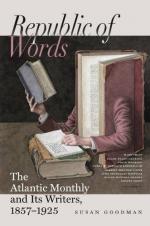has been matter for laughter for more than three hundred
years. Had her agonizing prayers for offspring
been heard, what a change would have been wrought
in human destinies, even had the child lived to be
no older than Edward VI.! The second son of Philip
the Fair and Juana was Ferdinand, named from his maternal
grandfather, Ferdinand the Catholic, king of Argon.
He was the founder of the German branch of the house
of Austria, the younger branch, which has long survived
the elder branch, though now it exists only in the
female line, and really is the house of Lorraine.
Ferdinand became Ferdinand I., Emperor of Germany,
and he did far more than was done by his elder brother
to keep up the character of his family for making much
through marriage. In 1522, when but nineteen,
he married Anne Yagellon, princess of Hungary and
Bohemia,—a marriage that might not have
proved very important, but that death came in and
made it so, and also the births that came from it,
as will presently appear. Charles and Ferdinand
had four sisters, and they all four made great marriages,
three of which were very useful to the Austrian house.
The eldest of these ladies, Eleanora, was married
to Emanuel, king of Portugal,—a man old
enough to be her father, with some years to spare,—being
sacrificed to the ambition of her brother Charles,
for she was attached to the Count Palatine. Becoming
a widow, she was compelled to give her hand to that
popular rascal, Francis I. of France, when her brother
wished to strengthen the treaty he made with his “good
brother” at Madrid, and which the Frenchman
had arranged to disregard even before he signed it.
The second sister, Isabella, married Christian II.,
king of Denmark, when she was but fourteen, and died
at twenty-four. Mary, the third sister, became
the wife of Louis II., king of Hungary and Bohemia,
and last of the Yagellons. The fourth sister,
Catherine, married John III., king of Portugal.
It was the marriage of the third sister, Mary, that,
in connection with his own marriage, had the greatest
effect on the fortunes of her brother Ferdinand, as
his wife was the sister of Louis II., Mary’s
husband. Louis was defeated by the Turks at the
battle of Mohacz, in 1526, and lost his life while
flying from the field. Ferdinand claimed the
crowns of Bohemia and Hungary, as Louis left no children,
and he was chosen king in both countries; and though
he disowned all other rights to the Bohemian throne
than that of the election, it is certain he never
would have been elected by either nation had he not
married the sister of Louis, and had not Louis married
his sister. All these marriages, and other events
that carried the power of the house of Austria to
the greatest height, took place only thirty-three
years after the death of Frederick III., and some of
his contemporaries may have lived to witness them
all.




